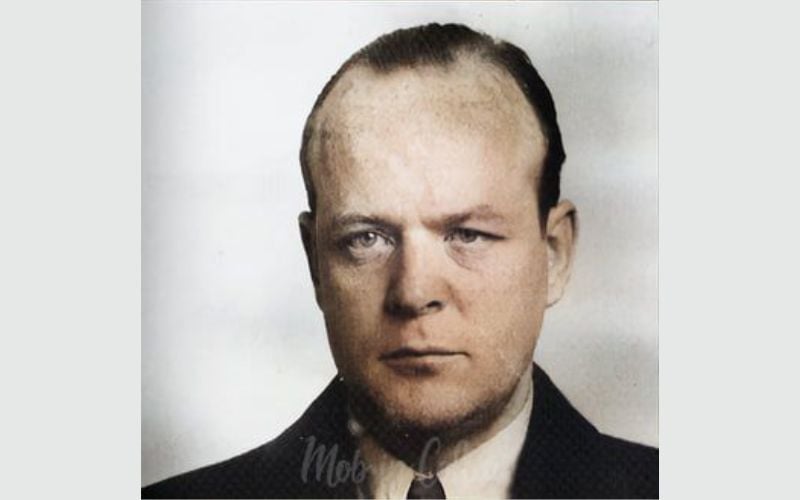This week we're going to tell you the sad story of one of Dublin's great institutions, the iconic department store called Arnotts.
But before we get to that (and the two things are related), a word about the hit to Ireland's international financial standing just over a week ago.
You probably read about this. The influential agency Standard & Poor's downgraded Ireland's rating from AA to AA minus, three levels below countries such as Britain, Germany and the U.S. The agency also put us on "negative outlook,” which is agency-speak meaning they think further downgrades are possible.
So what, you might think. Well, let me explain.
What this means is that all those billions the Irish state has to borrow to pay our day-to-day bills are going to cost us more in interest payments in the future. The international money markets will see us a bigger risk and will want higher rates.
And it's not just the borrowing by the Irish government. It also affects our banks. The money that the Irish banks lend to Irish businesses has to be borrowed by our banks on the international markets.
That's now going to be even more expensive, and the knock-on effect will be that Irish businesses will be paying very high rates for their loans.
On the money markets at the end of last week, the Irish state and Irish banks had to pay almost 5.5% for long term money. That is almost 3.5% more than the interest rate being paid by AA countries.
That filters down to affect how much businesses pay for their bank loans and how much individuals pay for their mortgages, car loans, etc. And of course it also means that a lot more of our taxes will be used to pay the interest on our rapidly mounting national debt.
So yes, it does matter. It matters because it's not just financial jargon for economists and analysts to chew on. It matters because it is going to affect us all here, prolonging our recession and lowering our living standards.
One of the main reasons that S&P downgraded us was because they have crunched the numbers, and they think the cost of recapitalizing the Irish banks and the cost of the NAMA system for taking over bad property loans is going to be much higher than the government says.
It's all down to the disastrous property madness that so many people got sucked into here. And that is where, as promised, we get back to the story of Arnotts, Dublin's biggest department store, which was taken over by its two main banks a few weeks ago.
Arnotts has built up so much debt over the past decade or so -- around 300 million euro -- that the banks are said to be willing to sell it for as little as one euro to anyone willing to take it on, with its liabilities.
It's still trading, but no one seems to be sure what the future holds. Certainly the albatross of debt around its neck puts a big question mark over its survival in its present form.
This has come as a huge shock to Dubliners because the grand old store has been a part of Dublin life for so long, since 1843 in fact when it first opened its doors on Henry Street. It is one of our oldest and most famous department stores, even getting a mention in James Joyce's novel Ulysses.
More recently, it has been the sponsor of the Dublin Gaelic football and hurling teams for almost 20 years. So it had a special place in the hearts of all Dubliners.
In New York terms, Arnotts does not have the cachet of Bloomingdales (we have Brown Thomas for that). Nor is it high up the fashion ladder like Barneys, Bergdorf Goodman or Saks.
Probably the closest New York equivalent is Macy's. Like Macy's, Arnotts is a vast emporium where you can get anything from clothing to beauty products, kitchenware, furniture, electrical goods and everything in between.
Solid, sensible, stylish in a middle market kind of way, it has served the needs of generations of Dubliners. It was where Dubliners over the past century and a half went to buy their bedclothes and, apart from food, all the other essentials for everyday living.
Even today, you would not think of going anywhere else to buy mattresses, duvets and so on. The staff knew their stuff and you could trust them.
How many clueless husbands, sent into town to get sheets or pillows, were rescued by Arnotts staff and sent home with the perfect purchase? (And yes, I was that soldier.)
If this makes it sound a bit like Grace Brothers, the fictional department store in the famous British TV sitcom Are You Being Served? then that would be wrong. Yes it is as traditional as its famous Victorian facade, which itself was a remodeling of the original frontage. But inside it has been transformed several times, most recently with a vast central atrium which goes up though all the floors and floods the place with natural light.
It may not have been as trendy in recent years as Brown Thomas but it is bigger; in fact it is the biggest store in Dublin, the fifth biggest in Britain and Ireland and one of the biggest in Europe.
And its friendly atmosphere and vast selection mean that it's still a firm favorite with middle-class Dubliners who feel a little uneasy in snooty Brown Thomas.
The result is that the store has always traded well, making profits year after year. Until recently that is, when like other big stores it was hit by the recession.
Last year it made a substantial loss, although it was a loss that the business could have carried until the upturn in spending arrives, if there were no other factors at play.
But on top of the trading loss, there is the huge annual interest bill from the vast amount of debt it has built up, a debt entirely due to playing the property market over the past decade, during which time Arnotts bought up all the surrounding property it could.
Why did it do this? Well, you could see it as a major business losing its head as the Celtic Tiger boomed and the property bubble went up and up. That was certainly a factor.
But there was also a retail logic to what Arnotts did. One of the problems Arnotts faces is its location on Henry Street on the north side of the Liffey, a long half mile walk away from Brown Thomas and the super swish Grafton Street on the south side of the river. Henry Street, because it's North Side, is seen as a bit downmarket, and a lot of shoppers from the wealthier South Side of Dublin don't go there.
That was one problem. Another problem was the development in the past decade of suburban shopping centers, like the Dundrum Town Center and the Pavilions in Swords which were taking business away from the city center, and particularly from the Henry Street area.
The Arnotts management decided that to fight back they needed to do a huge development around their store in the city center, a development so big that it would transform the north city center and change its image.
And so they embarked on a plan to buy up sites all around the Arnotts store in a huge block surrounded by Henry Street, Liffey Street, Abbey Street and O'Connell Street. (This included the old Irish Independent newspaper offices on Abbey Street, for example, where yours truly worked for years.)
The new area was to be called the Northern Quarter, and when the plans were unveiled a few years ago the proposed 750 million euro redevelopment was to include 47 new retail outlets, a 152-bedroom hotel, 189 apartments, 17 restaurants and bars, and a rooftop garden, as well as a 16-story tower block which would be a new landmark for the city center.
Backed by two banks, Arnotts proceeded to buy up everything around it. And then the crash happened, retail spending plummeted and there seemed to be little sense in going ahead with the Northern Quarter dream.
The problem is, of course, that the value of the sites and properties that Arnotts paid top euro for has dropped dramatically, and no one is buying property now anyway. So the dream has died.
And Arnotts has been left with massive debts it can't carry. You can have it for a dollar if you will take on the borrowings.
In the meantime, if you are in Dublin, do your shopping there because it deserves the break.




Comments